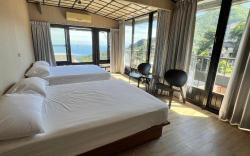Shengnan Temple Introduction
Shengnan Temple is the earliest established Buddhist temple in the Shuangxi area. It faced great difficulties in construction due to poor transportation in its early days and was developed through the efforts of Master Puxing, Master Renfu, and Master Renhui. Finally, the fourth abbot, Master Hongxiu, completed various constructions of the temple. Shengnan Temple consists of two parts: the upper temple and the lower temple. The upper temple was founded in the 16th year of the Republic of China, while the lower temple was built in the 29th year. The temple enshrines Shakyamuni Buddha, Medicine Buddha, Sun Buddha, Moon Buddha, Bodhisattvas, Dharma protectors, Guanyin, Kṣitigarbha, and others. Notable buildings include the Glazed Light Hall, Amitabha Hall, Guanyin Hall, Mahaviro Hall, and Kṣitigarbha Hall, each with its unique style and characteristics. Surrounded by lush forests, the serene environment evokes a sense of seclusion. The sound of morning bells and evening drums gives visitors a feeling of being in another world, and the "Bell Sound of Sheng Temple" from the poet's description of the "Eight Scenery of Shuangxi" is particularly famous. Visitors can drive directly up from the mountain below, and during the full moon or Buddha's birthday, the temple attracts a constant stream of devotees.








































